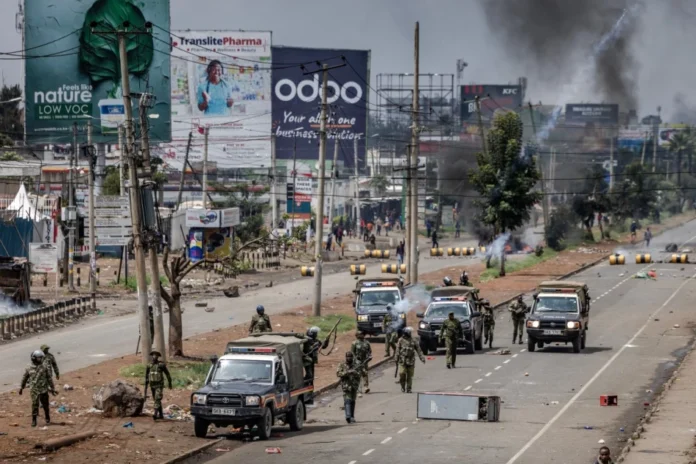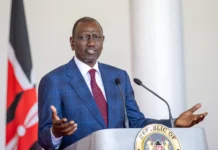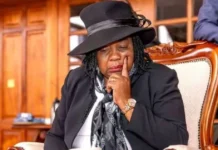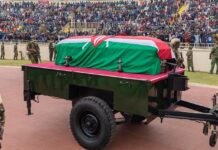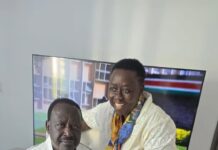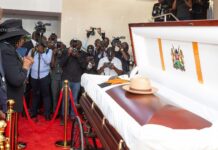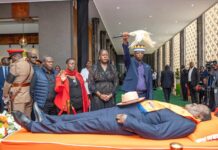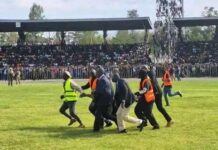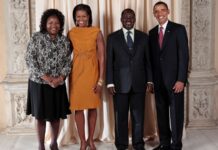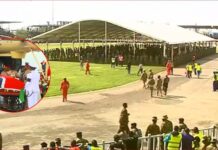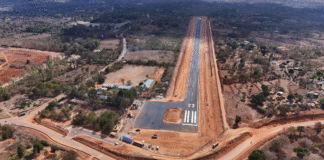The 35th anniversary of the Saba Saba pro-democracy movement descended into chaos and tragedy on Monday as police clamped down on protests with unprecedented force, sparking national outrage over the killing of civilians, the use of live ammunition, and reports of officers trailing demonstrators into their homes.
As early as 4 a.m., roadblocks were set up across all major entry points into Nairobi in a bid to prevent demonstrators from accessing the capital. Travelers from neighboring counties were forced to camp at petrol stations and roadside rest stops, leaving Nairobi eerily empty for most of the day.
Despite the clampdown, protest activity erupted in residential areas across Nairobi, Kiambu, Kajiado, and other regions. Eyewitness footage showed masked individuals in unmarked high-performance vehicles, mainly Subaru Outbacks, descending on protest hotspots, wielding high-calibre firearms and firing live rounds at crowds.
In Ngong and Kiserian, gunfire rang through the streets as videos captured bloodied bodies lying lifeless. One video from an unidentified location showed a lone gunman, dressed in civilian clothing and squatting in a firing position, shooting at stone-throwing protesters.
The brutality extended into people’s homes. In Ndumberi village, Kiambu, 12-year-old Bridgit Njoki was fatally shot while watching television. Her grieving mother, Lucy Ngugi, said the family had not joined the protests. In Kiambu town, 23-year-old Dennis Mutuma Mwangi was gunned down outside his home. His mother said he had only stepped out to hang his washed clothes.
Another viral video captured a uniformed officer shouting chilling threats: “Nikona ruhusa ya kukuua wewe, utalala kwa barafu” (“I have permission to kill you; you will lie on ice”).
Alongside the police crackdown, looting and vandalism erupted in several areas, allegedly carried out by state-sponsored goons. Shops in Kirinyaga, Murang’a, Meru, and parts of Nairobi were ransacked. In Kitengela, a mob even stormed a hospital, harassing patients and staff. Residents in Juja reported home invasions and muggings during the night.
Interior Cabinet Secretary Kipchumba Murkomen praised the police response, saying their actions were “commendable and necessary.” The National Police Service also lauded officers for “exceptional restraint,” despite widespread video evidence showing live fire and brutal confrontations.
According to police spokesperson Muchiri Nyaga, 11 people were killed nationwide, 52 officers and 11 civilians injured, and 567 individuals arrested. Twelve police vehicles and seven others were damaged. The Kenya National Commission on Human Rights (KNCHR) documented 10 deaths, 29 injuries, two abductions, and 37 arrests across 17 counties.
The government’s response drew heavy criticism from citizens and human rights groups. Activist Hanifa voiced her anger online: “We didn’t go to the streets, but they’re in our homes!” she posted on X (formerly Twitter), echoing growing concern over the militarization of civilian spaces.
Protests against taxation and governance have gripped Kenya since last year. While authorities insist on protecting state property, critics say state-sponsored violence and repression are silencing democratic voices under the guise of law enforcement.
Written By Rodney Mbua









